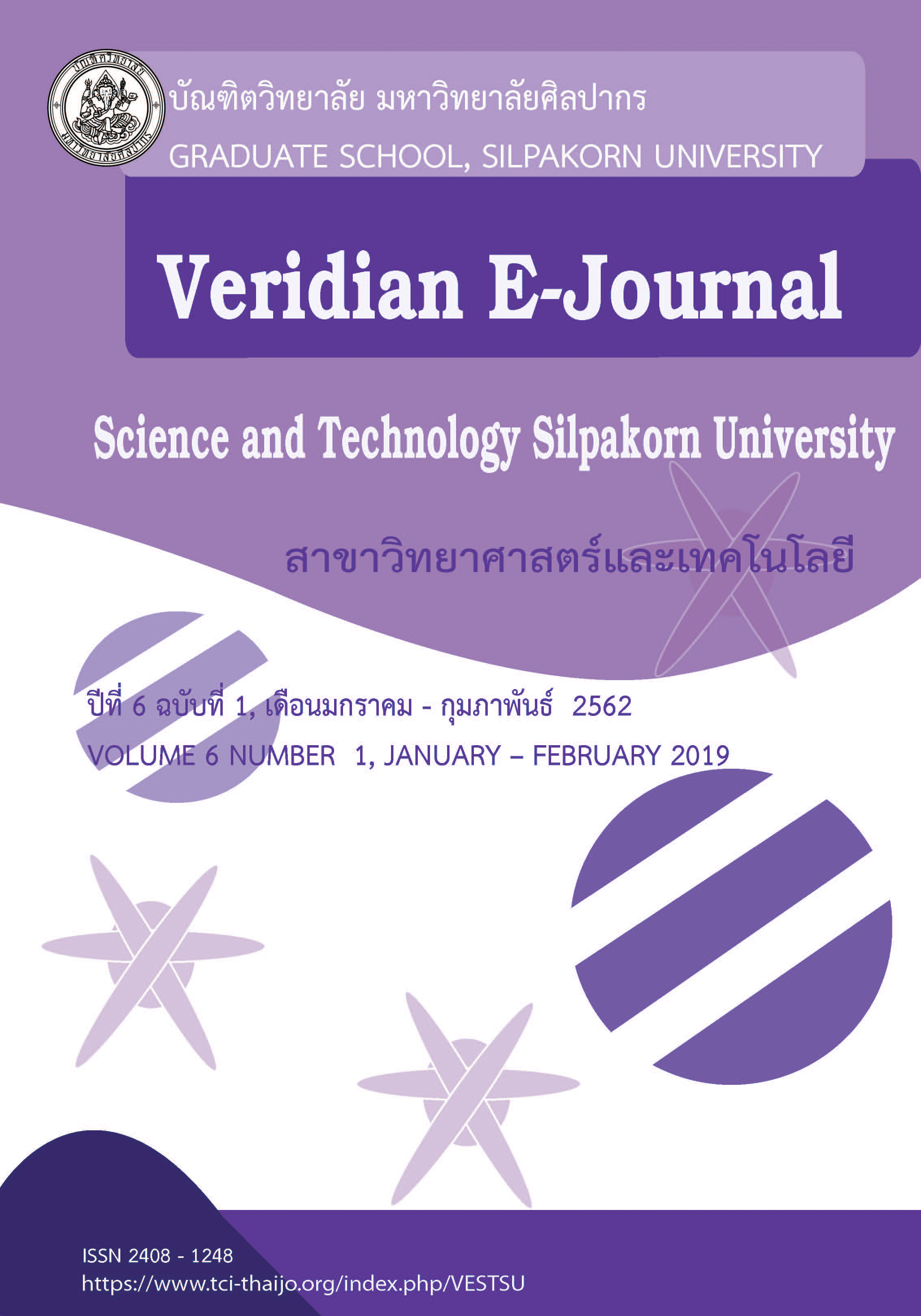การใช้สุขภัณฑ์เซรามิกเหลือทิ้งใช้เป็นส่วนผสมในคอนกรีตมวลเบาแบบเติมฟองอากาศ (Utilization of Sanitary Ceramic Waste for Lightweight Concrete)
Main Article Content
Abstract
งานวิจัยนี้มีวัตถุประสงค์เพื่อศึกษาการนำสุขภัณฑ์เซรามิกเหลือทิ้งหรือหมดอายุจากร้านค้ามาใช้เป็นส่วนผสมทดแทนทรายในการผลิตคอนกรีตมวลเบาแบบเติมฟองอากาศโดยมีอัตราส่วนผสมของชุดควบคุมได้แก่ซีเมนต์, ปูนขาวและทรายละเอียด เท่ากับ 30:20:50 (โดยน้ำหนัก) ใช้สารเพิ่มฟองอากาศได้แก่ผงอลูมิเนียมและน้ำยาโฟม 0.1 และ 2 เปอร์เซ็นต์โดยน้ำหนัก เพื่อศึกษาอัตราส่วนน้ำต่อซีเมนต์ (W/C) ที่เหมาะสมซึ่งเท่ากับ 0.55 จากนั้นนำอัตราส่วนน้ำดังกล่าวไปศึกษาการใช้เซรามิกเหลือทิ้งบดละเอียดทดแทนทรายโดยออกแบบอัตราส่วนทราย : เซรามิกเหลือทิ้งบดละเอียด เท่ากับ 40:10, 35:15, 30:20, 25:25, 20:30, 15:35 และ 10:40 (โดยน้ำหนัก) ตามลำดับ จากนั้นขึ้นรูปส่วนผสมในแบบหล่อคอนกรีตมวลเบาขนาด 150×150×150 ลูกบาศก์มิลลิเมตรก่อนนำไปบ่มที่อายุ 7 14 และ 28 วัน ก่อนนำไปทดสอบและเปรียบเทียบกับมาตรฐาน มอก 2601 คอนกรีตบล็อกมวลเบาแบบเติมฟองอากาศ จากการศึกษาโดยพิจารณาเกณฑ์มาตรฐาน มอก 2601-2556 ด้านความต้านทานแรงอัด ความหนาแน่นเชิงปริมาตรและการดูดซึมน้ำ พบว่าอัตราส่วนที่มีการแทนที่ทรายด้วยเซรามิกเหลือทิ้งบดละเอียด 30:20 (โดยน้ำหนัก) อายุบ่ม 28 วัน มีค่าผ่านเกณฑ์มาตรฐาน โดยพบค่าความต้านทานแรงอัด ความหนาแน่นเชิงปริมาตรและการดูดซึมน้ำ เท่ากับ 5.2 เมกะปาสคาล, 1235.5 กิโลกรัมต่อลูกบาศก์เมตรและ 19.75 เปอร์เซ็นต์ ตามลำดับ ซึ่งสามารถนำไปประยุกต์ใช้ในงานก่อสร้างงานผนังแบบไม่รับน้ำหนักในอาคารได้
The purpose of this research is to study the use of expiry-ceramic sanitary waste, derived from commercial store, as an aggregate for sand substitution in lightweight concrete. For control treatment, these lightweight concrete produced from cement: lime: sand, ratio 30:20:50 by weight, were mixed with 0.1% aluminum powder and 2% liquid foam by weight. The result shows that suitable water/cement ratio for these control treatment is 0.55. In addition, the concrete were produced with various ceramic sanitary waste and sand ratio e.g. 40:10, 35:15, 30:20, 25:25, 20:30, 15:35 and 10:40 by weight followed casting these concrete in 150×150×150 mm. mold. The casted concrete was then curing for 7, 14 and 28 days. Compressive strength, water absorption and density of the concrete were determined in order to compare the TIS standard 2601-2556. According to the present study, the sample substituted sand with ground waste ceramic with the composition model of 30:20% by weight, under 28 days ages showed the lightweight concrete properties of compressive strength of concrete 5.2 MPa, volumetric density 1235.5 kilograms per cubic meter and water absorption 19.75 %, which compliance with TIS standard 2061-2556, this revealed that the expired or waste ceramic sanitary could be considered to use non structured load bearing construction, for example, building walls.

